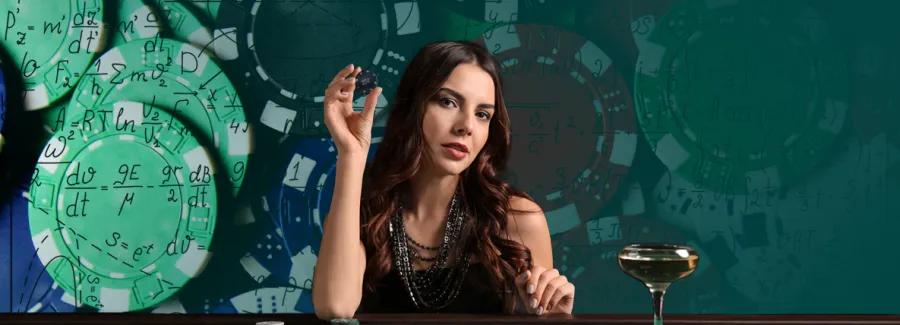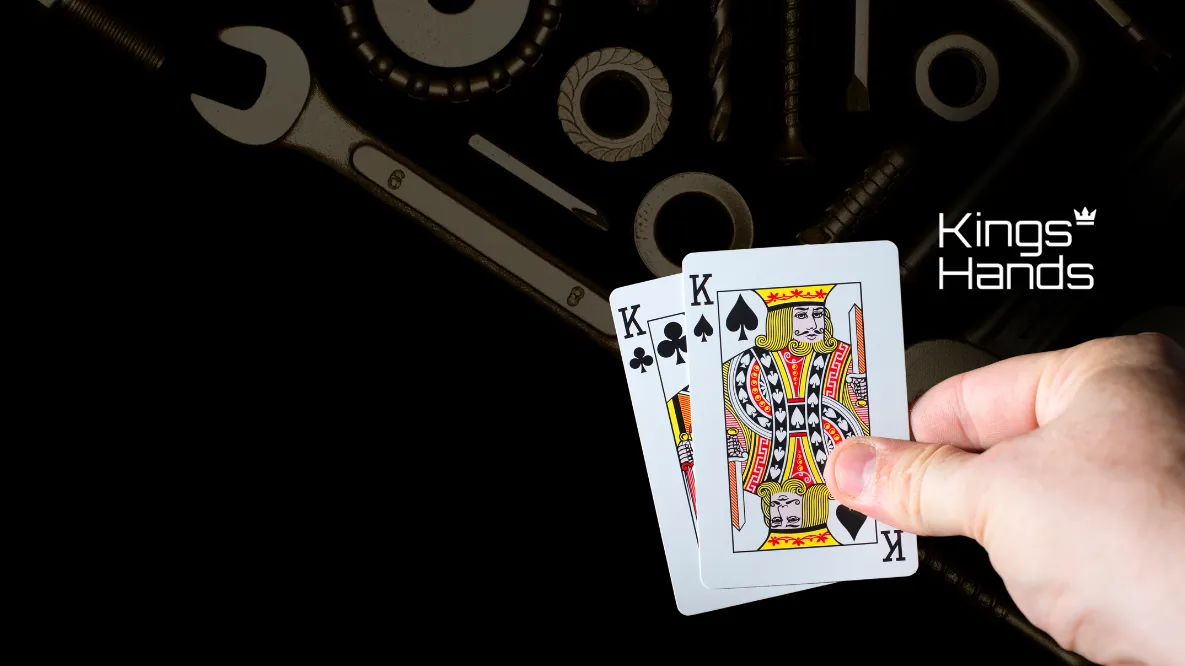We’ve reached the end of our Poker Math Made Simple series, so to round things off, let’s take a look back at the most important things we’ve learned during our time together. This round-up will be taking a look at the key lessons we learned from our articles, including the Rule of 2 and 4, how drawing isn’t always profitable, and more!
Rule Of 2 & 4
One of the key things you should be taking away from our Poker Math Made Simple series is how the Rule of 2 and 4 makes things considerably easier when working out the number of outs you have in a hand – especially across multiple streets. Rather than having to divide your outs by the number of remaining cards in the deck, you can simply multiply your outs by 2 or 4 to get an approximation of your equity.
While the Rule of 2 and 4 won’t give you your exact equity, especially in situations with a large number of outs, the result it gives you is often close enough that the difference is insignificant. Plus, the time you save by using this rule more than makes up for any slight equity inaccuracy, as you can better use your time to work out more complicated aspects of poker math or more carefully consider your opponent’s range.
Drawing Isn’t Always Profitable
Another key thing you should be taking away from this series is that drawing isn’t always a profitable thing to do. The chances of you making your hand are often much lower than it seems, making drawing to straights and flushes an unprofitable proposition when facing a big bet.
Throughout this series, we’ve armed you with the knowledge to calculate the odds of making your draws and to work out the equity of calling with draws when your opponent bets. By using these calculations in-game, you can work out exactly how profitable or unprofitable it is to draw to your hand.
However, remember to use implied odds to determine whether your call can become profitable on later streets if you do make your hand; otherwise, you may make a lot of bad folds with good draws!
Estimation Is Required
When performing a number of the calculations laid out in this series, we’ve emphasised the variables that you need to estimate as part of the equation. Estimating is by definition an inexact science, and a slight chance in an estimated variable can drastically change the results of your calculation.
However, that doesn’t mean you should just wash your hands of the matter and resign yourself to fate. Instead, you can use estimation to understand the outcomes of a best-case and worst-case scenario; changing the variables to test each extremity. By understanding what happens in these edge cases, you can give yourself the confidence to act on your estimation, knowing what the possible outcomes will be.
While you can’t avoid estimation in poker math, don’t use it as a crutch – use it to your advantage.
Bluffing Isn’t Always Profitable
A lot of players fall into the trap of thinking that if they can’t win at showdown, they must bluff with their hand. While this sounds like a valid mentality to have, it works under the assumption that there is no such thing as an unprofitable bluff, and therefore bluffing must be the best option.
We know from our studies into the EV of bluffing that this simply isn’t the case. We found that there are a number of instances where bluffing isn’t profitable and that we shouldn’t blast away whenever we have a non-showdownable hand.
Instead, consider the situation you find yourself in and ask yourself how often you think your opponent will fold based on their range construction. You can use this information to calculate the EV of your bluff and stop yourself from making an unprofitable decision.
A good rule of thumb to remember is that if your opponent is going to call you often, don’t bluff!
Don’t Use Poker Math In Isolation
Poker math isn’t this magic key you can use to instantly win at poker. It’s part of a multi-faceted strategy that considers things such as how your opponent plays, the table dynamic, player psychology, and much more! Poker math is the foundation for determining what’s profitable and what isn’t, but you need the other aspects to help you make these calculations.
If you don’t have a solid understanding of your opponent’s range and how they’re likely to act in certain situations, you won’t be able to accurately determine the EV of your actions. Part of this understanding of their range is informed by things such as they’re playing style and their psychology. In fact, anything that impacts how they play their range is important to consider!
Trying to use poker math on its own is like trying to drive a car with only an engine; sure, it’ll start, but you need the rest of the car if you want to go anywhere!
Summary
Poker math is an essential part of becoming a winning poker player. In this series, we’ve covered a number of different aspects of poker math that should help you make profitable decisions while you play. We hope we’ve made the world of poker math a little less scary, and allowed you to use these concepts to make you an even more profitable poker player!





















